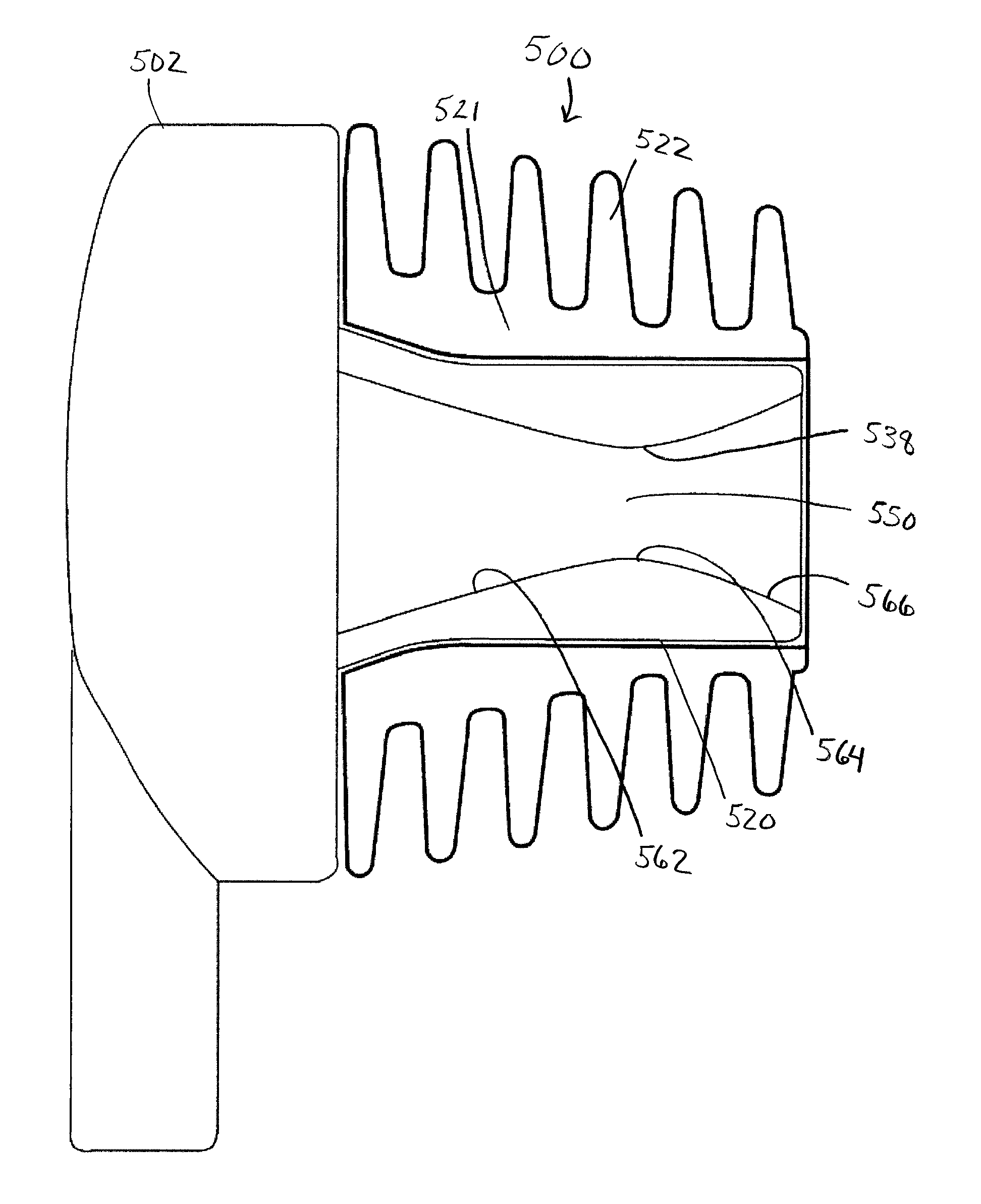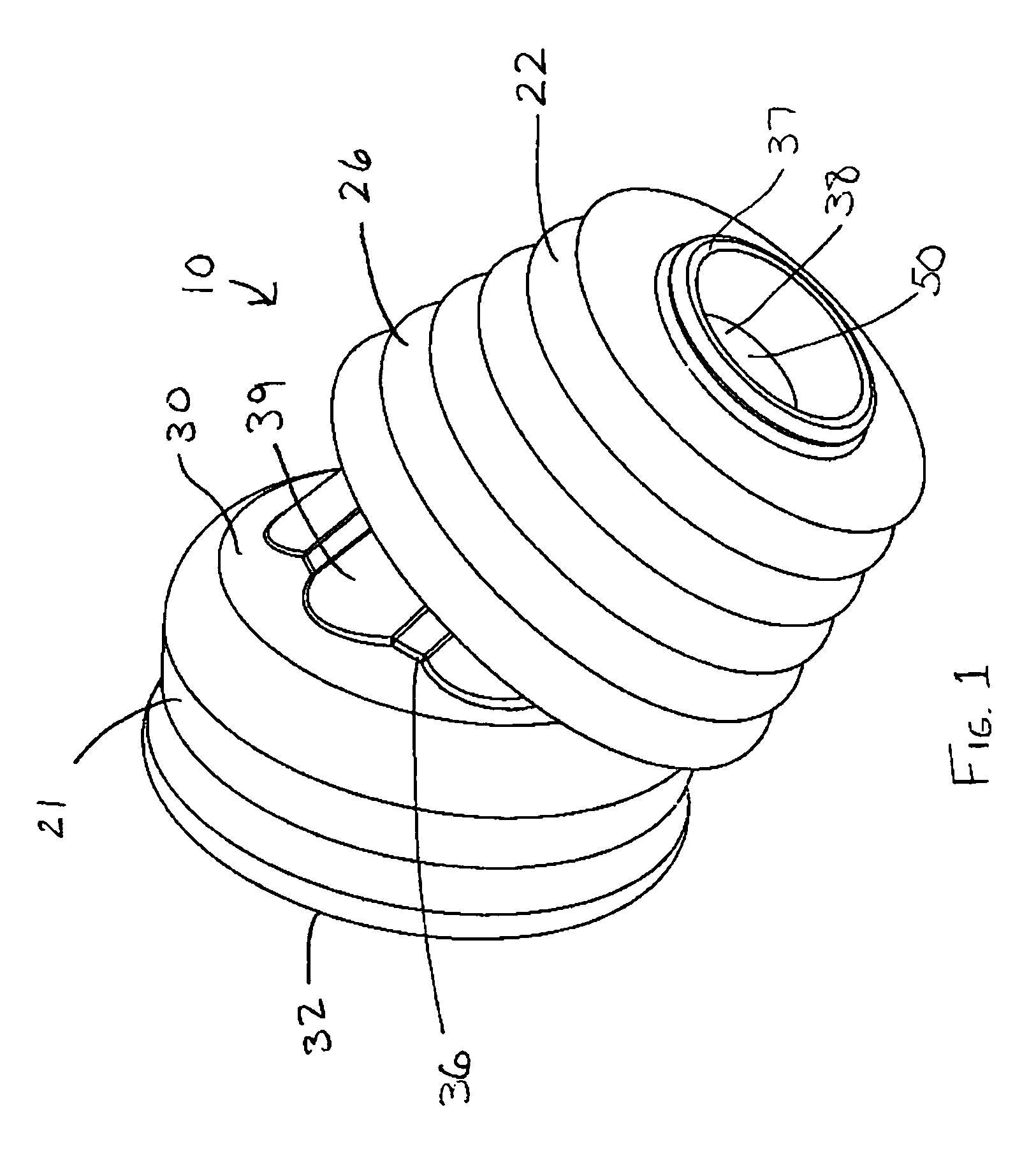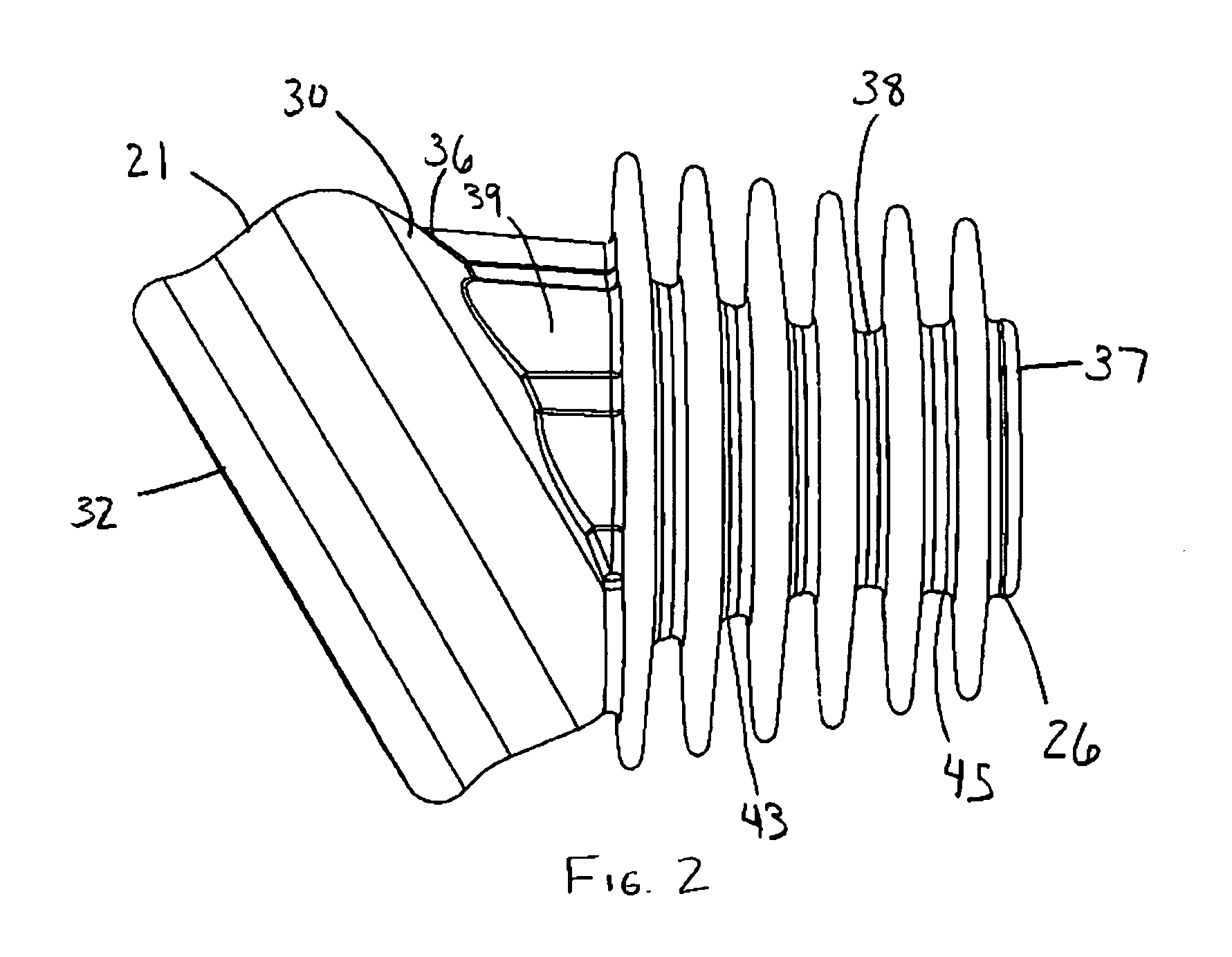In-ear adapter for earbuds
a technology for earphones and earphones, which is applied in the field of earphone adapters, can solve the problems of difficult to keep the position of the earbuds in the ear is often not well controlled or aimed, and the effect of improving the retention and sound isolation
- Summary
- Abstract
- Description
- Claims
- Application Information
AI Technical Summary
Benefits of technology
Problems solved by technology
Method used
Image
Examples
Embodiment Construction
[0048]I. Overview
[0049]An in-ear adapter according to a first embodiment of the present invention is shown in FIG. 1 through FIG. 7 and is generally designated 10. As shown, the adapter 10 is designed to mount over an ear phone or “earbud”20 from an electronic component such as a portable media player, cellular telephone or hearing aid. For purposes of disclosure, the adapter 10 is described in connection with a particular earbud 100, shown in FIG. 8. The earbud 100 has a speaker housing 110 with a sidewall 111 that encapsulates the speaker, and a speaker port 112 mounted to a front edge of the sidewall 111. The speaker port 112 may include a hole or holes that permit the passage of sound through the speaker port 112.
[0050]As illustrated in FIGS. 1-7, the adapter 10 generally includes a sleeve portion 21 that attaches to the outside diameter of the ear phone's sidewall 111, an ear portion 26 extending from the sleeve portion 21, and a plurality of fins 22 extending from the ear port...
PUM
 Login to View More
Login to View More Abstract
Description
Claims
Application Information
 Login to View More
Login to View More - R&D
- Intellectual Property
- Life Sciences
- Materials
- Tech Scout
- Unparalleled Data Quality
- Higher Quality Content
- 60% Fewer Hallucinations
Browse by: Latest US Patents, China's latest patents, Technical Efficacy Thesaurus, Application Domain, Technology Topic, Popular Technical Reports.
© 2025 PatSnap. All rights reserved.Legal|Privacy policy|Modern Slavery Act Transparency Statement|Sitemap|About US| Contact US: help@patsnap.com



